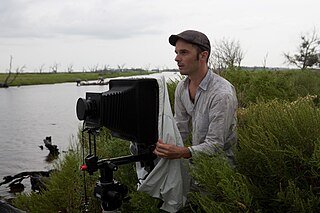
New Orleans is a consolidated city-parish located along the Mississippi River in the southeastern region of the U.S. state of Louisiana. With a population of 383,997 according to the 2020 U.S. census, it is the most populous city in Louisiana and the French Louisiana region; third most populous city in the Deep South; and the twelfth-most populous city in the southeastern United States. Serving as a major port, New Orleans is considered an economic and commercial hub for the broader Gulf Coast region of the United States.

The French Quarter, also known as the Vieux Carré, is the oldest neighborhood in the city of New Orleans. After New Orleans was founded in 1718 by Jean-Baptiste Le Moyne de Bienville, the city developed around the Vieux Carré, a central square. The district is more commonly called the French Quarter today, or simply "The Quarter", related to changes in the city with American immigration after the 1803 Louisiana Purchase. Most of the extant historic buildings were constructed either in the late 18th century, during the city's period of Spanish rule, or were built during the first half of the 19th century, after U.S. purchase and statehood.

Tulane University, officially the Tulane University of Louisiana, is a private research university in New Orleans, Louisiana. Founded as the Medical College of Louisiana in 1834 by seven young medical doctors, it was turned into a comprehensive public university as the University of Louisiana by the state legislature in 1847. The institution became private under the endowments of Paul Tulane and Josephine Louise Newcomb in 1884 and 1887. The Tulane University Law School and Tulane University Medical School are, respectively, the 12th oldest law school and 15th oldest medical school in the United States.

Dillard University is a private, historically black university in New Orleans, Louisiana. Founded in 1930 and incorporating earlier institutions founded as early as 1869 after the American Civil War, it is affiliated with the United Church of Christ and the United Methodist Church.

Fort Jackson is a historic masonry fort located 40 miles (64 km) up river from the mouth of the Mississippi River in Plaquemines Parish, Louisiana. It was constructed as a coastal defense of New Orleans, between 1822 and 1832, and it was a battle site during the American Civil War. It is a National Historic Landmark. It was damaged by Hurricanes Katrina and Rita, and its condition is threatened. It is marked Battery Millar on some maps, for the Endicott era work built nearby it.

The New Orleans Public Library (NOPL) is the public library of the city of New Orleans, Louisiana, United States. Succeeding earlier libraries in the city, it opened in 1897. Three branches were added by 1908. Carnegie library branches were added in 1911 and 1915. By 2005 a dozen branches were open. The main library is listed on the National Register of Historic Places.

Michael Arata is an American actor and film producer. He began his acting career at age four and has since appeared on stage, in feature films and television programs.

Willow School, formerly Lusher Charter School, is a K-12 charter school in uptown New Orleans, Louisiana, in the university area. Willow is chartered by Advocates for Arts Based Education (AABE), which acts as the board for the entire school. Willow School has three uptown campuses; the lower school program is housed at the Dr. Everett J. Williams, Jr. Campus, the middle school is at the Ellis L. Marsalis, Jr. Campus, and the high school is at the Elijah Brimmer, Jr. Campus on Freret Street. A temporary campus was housed at the Jewish Community Center on St. Charles Avenue.

The New Orleans Jazz Museum is a music museum in New Orleans, Louisiana, U.S., dedicated to preserving and celebrating the history of jazz music. Originally a separate museum, the collection is now affiliated with the Louisiana State Museum. The New Orleans Jazz Museum is located in the Old U.S. Mint building on 400 Esplanade Avenue, bordering the historic French Quarter neighborhood.
David G. Spielman is an American freelance photographer.

The Southern Food and Beverage Museum is a non-profit museum based in New Orleans, Louisiana, with a mission to explore the culinary history of the American Southern states and to explain the roots of Southern food and drinks. Their exhibits focus on every aspect of food in the South, from the cultural traditions to the basic recipes and communities formed through food.

John Tarrell Scott was an American sculptor, painter, printmaker, collagist, and MacArthur Fellow. The works of Scott meld abstraction with contemporary techniques infused with references to traditional African arts and Panafrican themes.

The New Orleans African American Museum (NOAAM) is a museum in New Orleans, Louisiana's visiting Tremé neighborhood, the oldest-surviving black community in the United States. The NOAAM of Art, Culture and History seeks to educate and to preserve, interpret, and promote the contributions that people of African descent have made to the development of New Orleans and Louisiana culture, as slaves and as free people of color throughout the history of American slavery as well as during emancipation, Reconstruction, and contemporary times.

William (Kross) Greiner in New Orleans, Louisiana is an American photographer and painter, living in Fort Worth, TX.
The following is a timeline of the history of the city of New Orleans, Louisiana, USA.

Frank Relle is an American photographer who lives and works in New Orleans, Louisiana.
Josephine Marien Crawford was an American painter, born into an old, aristocratic family in New Orleans, Louisiana. Along with Paul Ninas and Will Henry Stevens, she has been credited with introducing modernism to New Orleans.
A. J. Meek is an American photographer, teacher, and writer. Meek is known for his selenium toned silver gelatin contact prints made with an 8 x 20 banquet camera of landscapes in Louisiana and the American West and for images that are a balance between the documentary tradition and the fine arts.
John K. Lawson aka JKL is an American Contemporary visual artist and poet, also known as the "Hieronymus Bosch of Beads," and is known for using salvaged Mardi Gras beads and items reclaimed from the destruction left by Hurricane Katrina in his art.
Carl Joe Williams is an American visual artist based in New Orleans.















